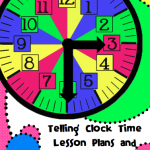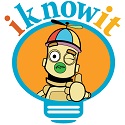Bulletin Board On Fire!
For the past two years we have honored students who scored proficient or advanced on the state benchmark exam by displaying their picture in a creative way on the wall as soon as you enter the school. Our principal told us this year that our theme would be “Let’s Keep the Torch Burning!” That sparked the Olympic theme idea to make our Wall of Fame. We decided to make gold medals for each student and place their picture on each medal. The gold circles were cut out on a Cricut from gold scrap book paper. Then we hung the medals on red ribbon in the hallway with the students’ names below their picture. We originally wanted to hang the medals on red white and blue ribbon, but the store we ordered from wasn’t able to order an additional ribbon.
Then we placed a torch scene on the adjacent bulletin board to finish out the Olympic theme. The large gold fire “bowl” is a plastic flower pot spray painted gold that we had cut in half…thanks to one of our teacher’s husbands. The fire inside of the bowl is held up with a semi circular piece of corrugated cardboard with holes punched in it to hold the white Christmas lights and twisted cellophane. The torches on the sides are made with gold poster board rolled up and stapled. Then red, orange, and yellow cellophane are stuffed in the top to mimick fire.
To give the board more pizazz, we included Christmas lights stapled behind the red and yellow cellophane both in the fire “bowl” and on the bottom of the bulletin board. We set the lights on a glimmer setting so that the flames actually look like they are flickering. Covering the lights first with red cellophane helps hide the dark green cords. Then layering with yellow and orange adds a nice fire effect. Thanks to one of my followers who told me about an Olympic theme that she was incorporating with tiki torches for math fact races. She said that she used a battery operated candle inside the torches to make them look like they were burning. This gave me the idea for using Christmas lights.
All of the kids, parents, and staff who walk by exclaim things like….oooooh! cute! pretty!
We know that we have definitely put a spotlight on the kids who worked so hard last year.
Decimal Number Line: Project Completed
I am posting a follow up of the lesson I co-taught with a fifth grade teacher. The earlier post shows the number line that I made for students to model their number line after. I had planned to have students do a different section of hundredths so that we would have a large number line from 0 to 1 tenth compiled of different students’ number lines. I decided not to have them do different numbers than I had shown on my own number line because I saw that students were struggling with the idea of counting by thousandths in discussion before they did the task. The whole project took about 2 days for almost all students to finish. Below I have pictured two of the students’ number lines that turned out well. None of the groups quite had time to write the midpoint between two different hundredths like I have in blue….five thousandths, fifteen thousandths, twenty-five thousandths etc. Even though students muddled through this and had a difficult time getting started, I would do this lesson over again. I probably would spend more time examining decimal number charts first so that students would more quickly recognize number patterns to write them on a number line. To save yourself some time if you want to build these number lines see the measurements I used in my earlier post.
You Will Need These to Help Your Students Count Past 100…
I made the Hundreds Chart Number Cards to 1200 to push our second and third grade students towards counting higher numbers. I found a need for a chart that extended past 100 or even 300 after doing some basic counting assessing with students. This year, we gave all of the students in grades 1-5 a counting assessment to see how high they could count. We asked them how high they thought they could count. Following this question, we had them start counting by ones starting ten back from that number. So for example, if a student said they could count to 200, we had them begin counting at 190 and count until they made an error. We noted the number they counted to and their errors. Doing this proved very revealing, and helped me know where a lot of misconceptions about basic number sense are occurring. Now I am seeing a need to continue practicing counting and exploring patterns past 1000. Some students can count to 1000, or even 1009, but have difficulty after 1009 or 1099. They often think 2000 is the next number. That is why I have made these numbers to give teachers a tool to help explore these patterns up to and past 1000. I specifically created this set of numbers for third graders who are having just this difficulty but this could be used with any grade level K-5.
How the Hundreds Chart Number Cards can be used:
When students have learned to count 1-100, higher numbers may be placed on the hundreds chart to recognize patterns and generate discussion. For example, you may decide to place numbers 51-150 on the chart so students can practice counting past the 100 century. Also, you may put 3 hundreds charts together on top of each other in your classroom and begin with 1-300 so students can see patterns among different centuries. When students have learned 1-300, the cards may be replaced with higher numbers such as 301-600, 601 -900, and so on.
The Hundreds Charts Numbers may be used in a variety of ways. Use the numbers for daily counting and number recognition. The numbers may also be used for other activities. For example, remove some of the numbers from the chart and hand them out to students to put back into the empty spaces. In order for students to place the number back in the chart, they must explain the pattern they used to place the number. The cards may also be used for pattern recognition of multiples or even/odd numbers. If copying lots of color is not a problem, the red and white cards are provided for pattern recognition. For an ink saving version, use the black and white version to copy multiples on different colored card stock.
These will fit in the hundreds pocket chart you may already own. Just click the picture below. This will take you to TPT to download the numbers.
New York Performance Tasks
I just wanted to share another free common core resource with you. Performance tasks from New York. There are some good ones, but not as put together as the ones from Georgia that I posted recently. But still you can search your grade level and topic to locate good resources to teach many standards. However, they aren’t all covered yet, but it is worth your time to look!
Click below for the link:
Are Your Students Struggling with Ordering Decimals…Try This!
To help 5th graders understand decimals last week, I built this number line using an old roll of fax machine paper. I measured off a little over two meters and then marked every two centimeters to put another number, so I would have room to write the numbers and for them to actually be seen. Students don’t usually have much of a problem ordering decimals to the hundredths place because they can visualize pennies and dimes, but past that students struggle. Also, thousandths are a bit daunting to teach…after all they don’t make “thousandths” manipulatives….at least that I am aware of. This coming week, students are going to build their own number line between two hundredths and we are going to connect all of the number lines and put them somewhere…I am not sure where because it will be VERY LONG because 100 numbers are written on it. Another something I did to the number line is I glued hundredths blocks down underneath the hundredths numbers, so students could see the concrete representation of these.
In case you aren’t familiar in decimal base ten block world:
a flat = 1 whole
a rod = 1 tenth
a unit= 1 hundredth
When explaining hundredths and thousandths to students I do the unthinkable. I take a blue foam base tenth block and a pair of scissors in front of the class and SNIP a hundredth goes flying a few feet away. This grabs students attention because #1, I just cut a holy math manipulative, and #2 something just went flying across the room for those students who may have just momentarily zoned out . No worries, I have had tubs and tubs of these math manipulatives (oh we are calling them “tools” now) that I could build a shrine to them with lit candles. In other words I have plenty that if I cut one it isn’t a big deal. THEN, I take the itty bitty hundredth that I just cut and SNIP another slice goes flying. I tell students that this slice is one thousandth. This visual really helps students to see how tenths, hundredths, and thousandths are related. A speck can even be cut off of the thousandth so that students can see what a ten thousandth looks like. After I have cut all of these pieces off, I put them underneath the document camera so students can see them up close.
Update 4-11-2019 Since this post has become so popular, I am going to list the number line I made that is like the base ten block one above , but it is all nice and printable.



Is Not Knowing This Simple Math Concept Holding Your Students Back?
Brainstorming about how to make numbers such as 1 million comprehensible to students with the new common core standards, the fourth grade planning team and I discovered a way to do just that. We knew that we didn’t have enough thousands blocks to make ten thousand, one hundred thousand, or for sure 1 million! So we thought about how we could do this with pictures of the blocks. We discussed taking pictures of the thousands blocks and putting them together in picture form so that the students could actually see the blocks. I had no idea that the pictures would turn out SO LARGE! I’m going to hang them up on the wall with labels, but I took some pictures with them on the floor first while I was standing on a chair. Take a look below.
I had to put the million block through the laminator folded in half so that it would fit. Then I cut the edges to unfold it and put it through the laminator again to laminate the back.
We often forget to ask the simple questions about these concepts. Such as how many hundreds are in 1000. Students can often count to “ten hundred”, but they aren’t sure if that is the same as 1000. I ask, “Is that the same? Are you sure?”
Then I prompt students to prove it with 10 hundreds blocks up against a thousand cube. This same idea needs to be repeated with ten thousands, hundred thousands, and millions so that they aren’t just a words they hear that just ‘means a really large number’.
For the first time ever, I hear fourth graders able to articulate that there were 10 thousands in a ten thousand, 10 ten thousands in a hundred thousand, and 10 hundred thousands in a million. Students understanding this concept was a result of their creating a hundred thousand with ten thousand block printables, and creating one whole class one million after taping together many students’ hundred thousands. I recommend this exploration activity for all students who are studying place value of numbers this large. (I wish I could share the ten thousand printable with you, but one of the fourth grade teachers I planned with made it–I don’t have a digital copy to share, I’m sorry. It would be easy enough to make. Just copy and paste 10 thousands cubes together)
Free Common Core Lessons from Georgia
In case you don’t live in Georgia, you may not know about Georgia’s wonderful resources. They have all of the math common core standards placed in units with lessons for each one! I wish I had found this earlier. Even if you don’t completely like every lesson, the lessons will definitely give you a great starting point to make lessons of your own. Thank you Georgia! This is so helpful! Just click the screenshot to find the site. Then click on the plus sign on the gray bars for your appropriate grade level on the right side of the screen. A drop down list will appear. Just pick the unit you want, and you will be taken to the PDF files.
You Can Learn Something From a First Grader…
This past week I was asking a first grader how she had solved a math problem. When she showed me how she had used her fingers, I realized something amazing. She actually saw doubles on her fingers. I had never paid attention to exactly how students had used their fingers to solve problems. She used each hand as the separate addends in a problem, but more specifically she used each hand as the addends of an addition problem with doubles. So for example, she was easily able to see that 4 and 4 make 8 and that two more fingers (doubles plus 2) make 10– put one more finger up on each hand to make five fingers on each hand or ten fingers altogether. She used this strategy fluently, but it had never dawned on me to see patterns with doubles on two hands. I had always thought of the number four as just four fingers on one hand alone–not as two fingers on two different hands.
Can Your Students Count past 1000?
While working with students especially in intervention groups, I have found that they have difficulty passing a century number–both going forwards and backwards. Their counting is just fine when they, for example, count 695, 696, 697, 698, 699, (VERY LONG PAUSE). At this point with some prompting students are finally able to figure out 700. But this type of struggle occurs on a regular basis. The struggle is even worse when you ask a student… What comes before 700? What is one less than 700? (Long silence accompanied by a blank stare) Asking questions like these to fourth graders one would expect a quicker answer. Could it be that when students make it to the 300’s chart we just expect that they have discovered all numeric patterns. Somewhere amidst passing the students on to the next grade level someone forgot to mention that this is just the first few sets of numbers, and that numbers go on forever in a repeating pattern. The second grade teacher thinks the third grade teacher will teach this. The third grade teacher expects that they should “already know this” and so the baton is dropped, and another student treads on a shaky foundational understanding of number. Some students do make this mathematical connection without being explicitly told, however others do not, and need to be presented with a task and questioning that will help students discover the repeating patterns in number.
Because I have seen no publishing companies extend number charts past 300, I developed these for my school. These charts are extended to 1200, so that students can recognize the repeating patterns. Most of the charts have a probing question at the bottom to help prompt discovery of patterns. Most of the charts also start and end ten numbers before a multiple of 100 so that students are able to build understanding and find patterns before and after multiples of 100. If you click on the link, you will be directed to TPT to get a few charts for free by clicking on the preview download! There are over 70 pages of number charts included.
Easy But Cute Back to School Bulletin Board
Here is a snapshot of what we worked on putting up last week for open house in our main hallway. I still feel like it needs a little pizzazz or sparkle, but we got lots of complements on the board all day! You may not be able to tell from the picture, but we hot glued crayons and pencils into the open pencil box. There is also a magician’s wand in the backpack with the folders that doesn’t show up very well. Hence the theme of the board…”Welcome to a Magical Year.” That has proven to be a curiosity that stops adult traffic in the hall. I hope you can use this idea and improve on it. Post a picture and link to my sight if you do. I would love to see it.




















































